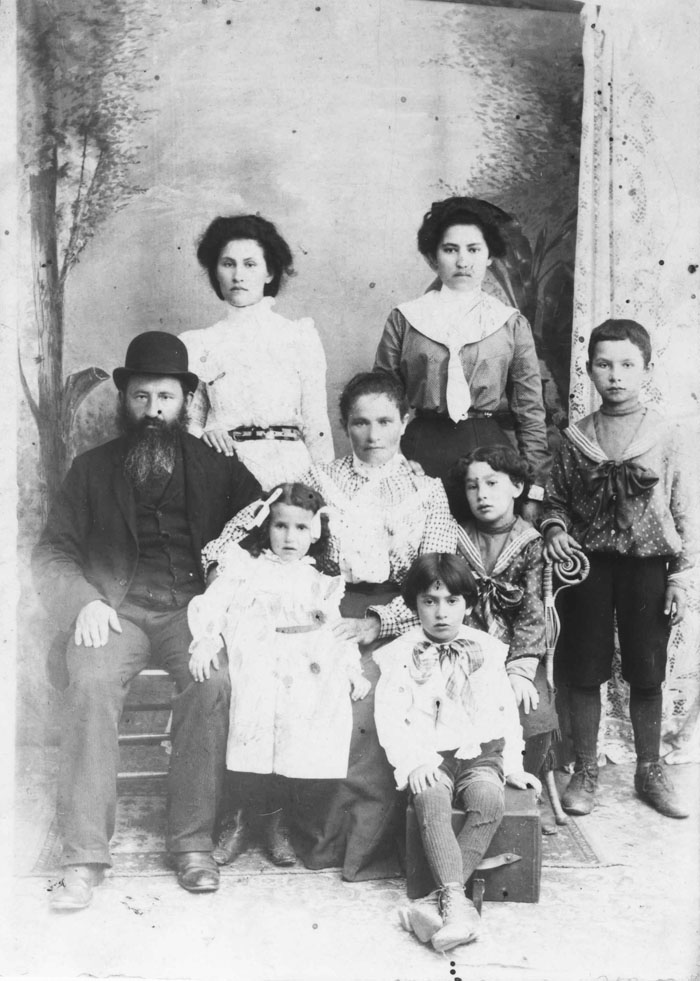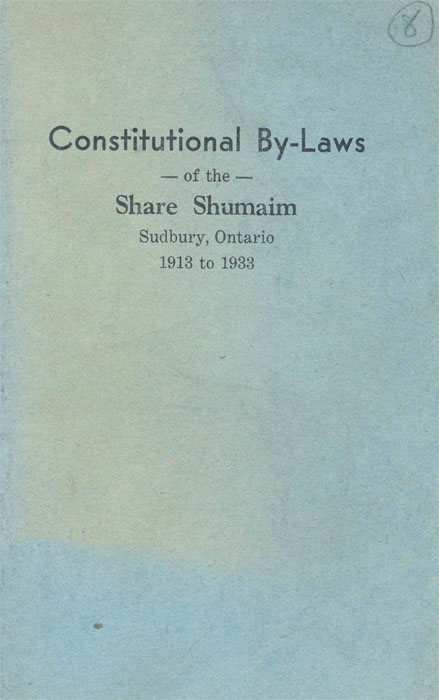The first Minyan and Synagogue
By the 1890s, there were sufficient Jewish men living in Sudbury to have a minyan. Men gathered in Dan Rothschild's home for the earliest Jewish services in Sudbury. Unlike many other small towns, Sudbury had two Jewish residents during the early years who declared themselves to be rabbis. The first was Rabbi David Wichefsky, who arrived around 1894, bringing his wife Esther and four children with him. They later had two more children in Sudbury and became permanent residents. In 1905, Rabbi Henry Atlas moved to town, bringing his wife Mary and children with him from Russia. Like many of the early Sudbury residents who only stayed a short time, he remained in town until around 1912 and then left. Although he used the title rabbi and taught the children Hebrew, he had a degree in biology and did not have any real rabbinical training.
Construction of the first synagogue began in October, 1913 on a section of Dan Rothschild's property at 7 Dufferin Street. It was a brick structure built in the Orthodox tradition, with men on the ground floor and women and children in the gallery above. The first executive meeting was held on 5 October 1915, where Hascal Moses was nominated their first president. The shul, in turn, was legally named Share Shumaim Congregation of Sudbury.
The women's auxiliary was established in 1917 and included many of the prominent Jewish women in town. Only Jewish residents of Sudbury and nearby towns were eligible for membership and dues were set at $1 a month. In addition, they also charged members for High Holiday seats whether they were in town or not. The rates were $3 for single men, $5 for married men and their families and $8 for special seats. Rabbi Wichefsky delivered the first Rosh Hashanah service in the new synagogue and his family was offered free seats. The treasurer of the executive was responsible for collecting money from the congregation each month to pay the Rabbi. Jack Magder states that his father, Saul, spent hours going around collecting. His family also had the mikvah in their house that served the shul.







